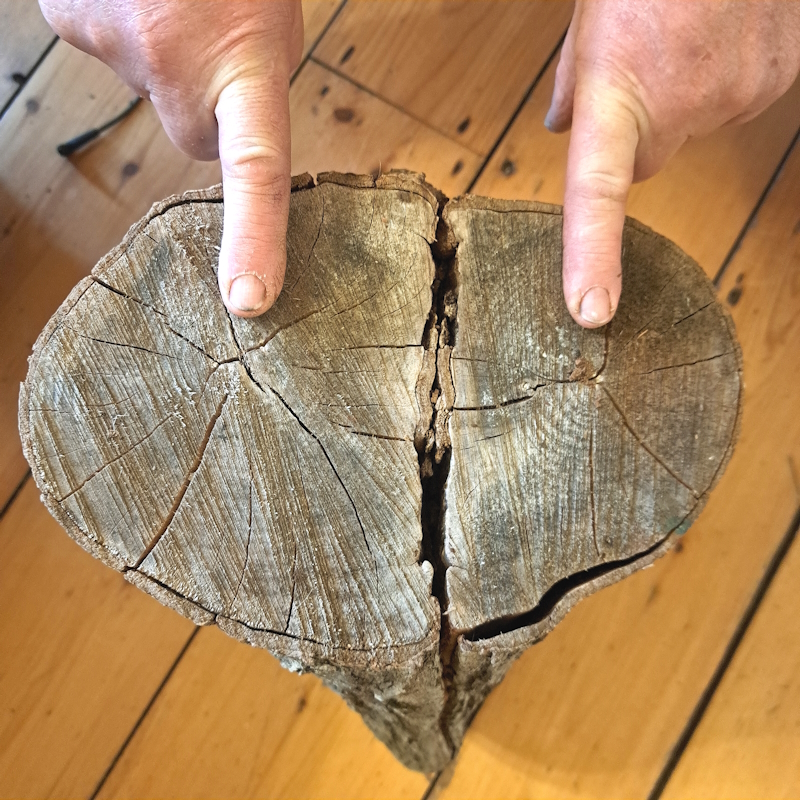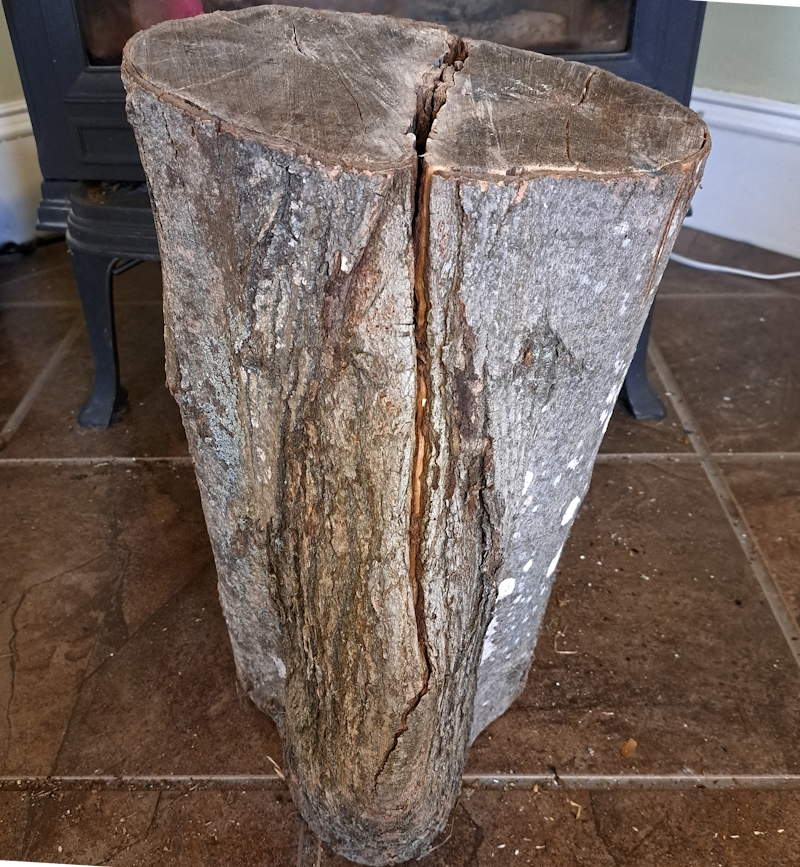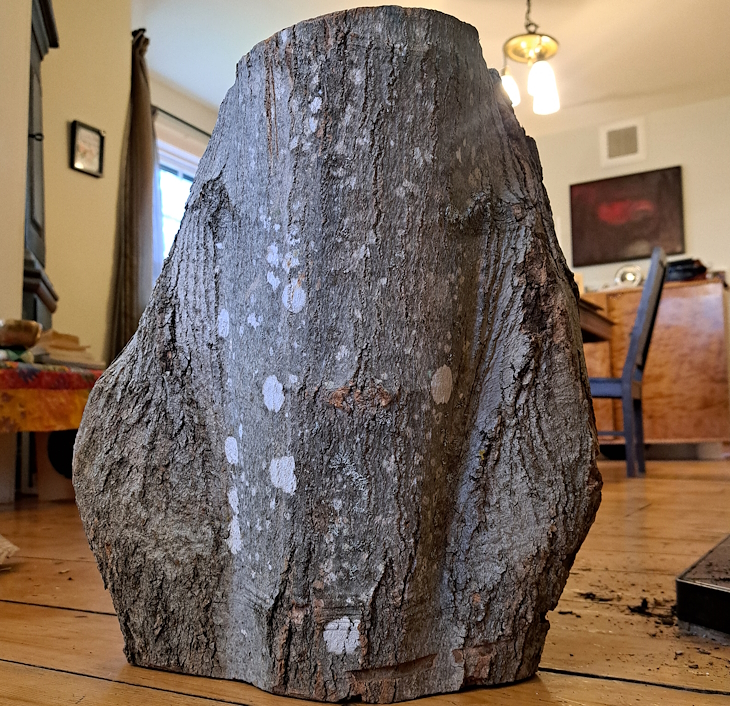
Codominant stems are the most common cause of urban tree failure. Many trees will form codominant stems in their youth, which will eventually grow into problematic structure prone to splits and cracks. This maple is a classic example of how codominant stems form a poor union, and can teach us how to recognize codominant stems in your trees.

Codominant stems often form when two or more leader stems compete to for light and space. They grow alongside each other, sometimes to great height, but the union between them is very weak. As you can see, the two stems have bark growing between them, otherwise known as included bark, meaning there is actually very little wood holding these stems together.
As illustrated in Claus Mattheck’s children’s book, “Stupsi Explains the Tree,” concerning codominant stems will often have big “ears” at its union. This maple is a classic example of those “ears,” and is already cracking from the stress.

If you are curious about your tree’s longevity, checking for codominant stems is a great place to start. Take a look at where stems meet, do they have big ears or little ears? Are there any cracks or splits? The earlier we intervene with codominant stems, the better. Often, they are avoidable with regular pruning.

Once a tree with codominant stems reaches a certain age, our intervention methods may graduate to cabling and bracing to help the union stay together. Read more about our cabling and bracing methods here: